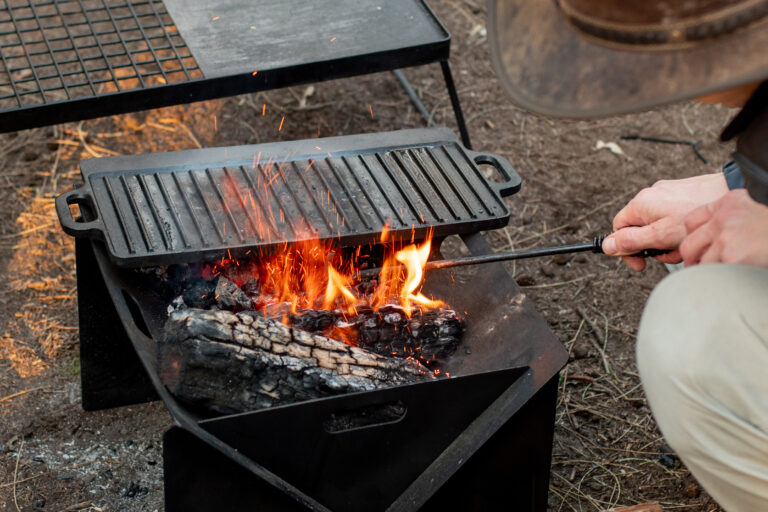5 Best Sausage Stuffers to Make Sausage Like a Pro
Choosing the right sausage stuffer is key for homemade sausage success. Manual models offer control and budget-friendliness, while electric ones save time and effort. Different designs cater to varied needs.
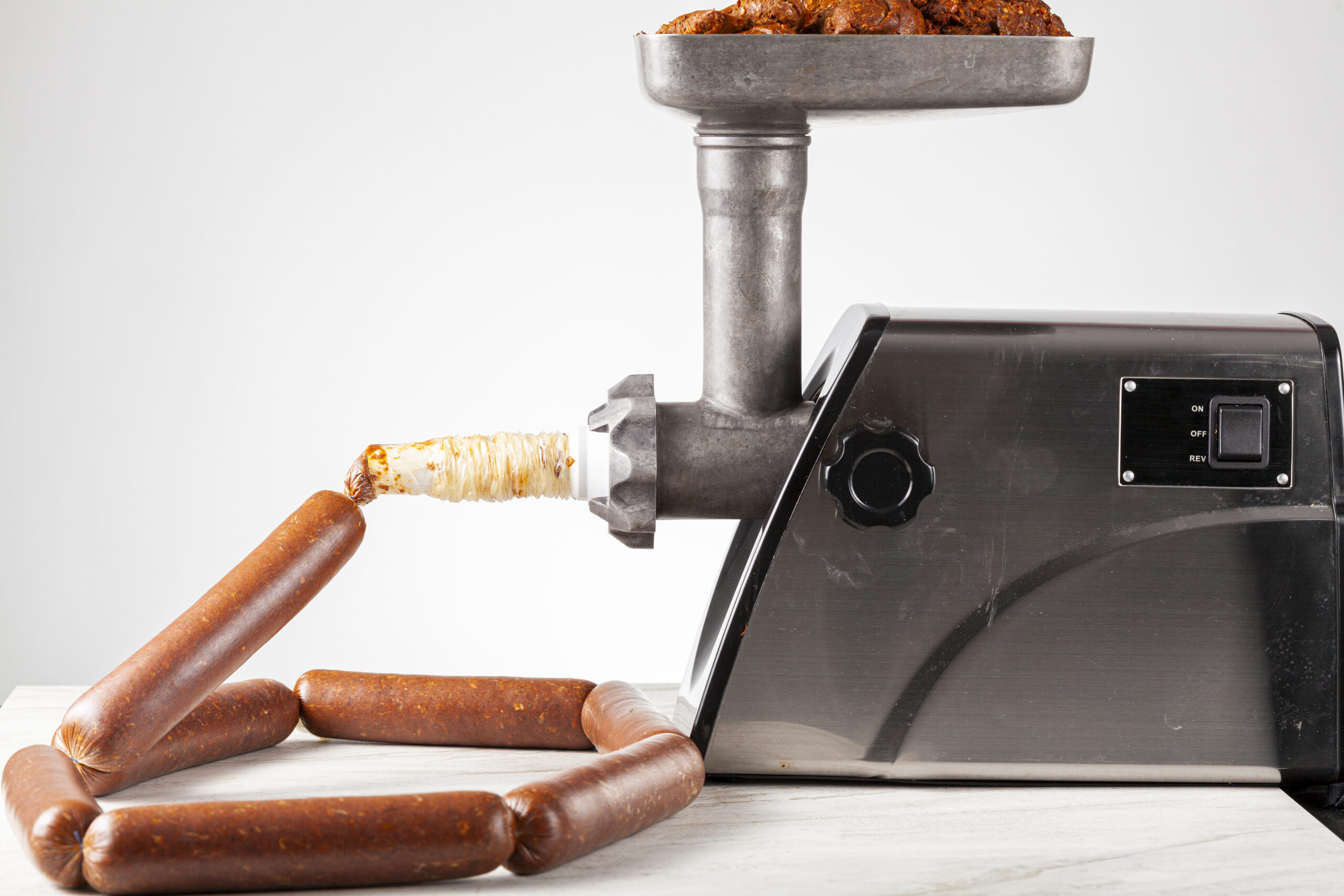
Embarking on the journey of homemade sausage making transforms your kitchen into a gourmet haven, but the right tools are crucial for success. A high-quality sausage stuffer is a game-changer, offering durability, ease of use, and precision in every batch.
Disclosure: As an Amazon Associate, this site earns from qualifying purchases. Thank you!
Types of Sausage Stuffers Explained
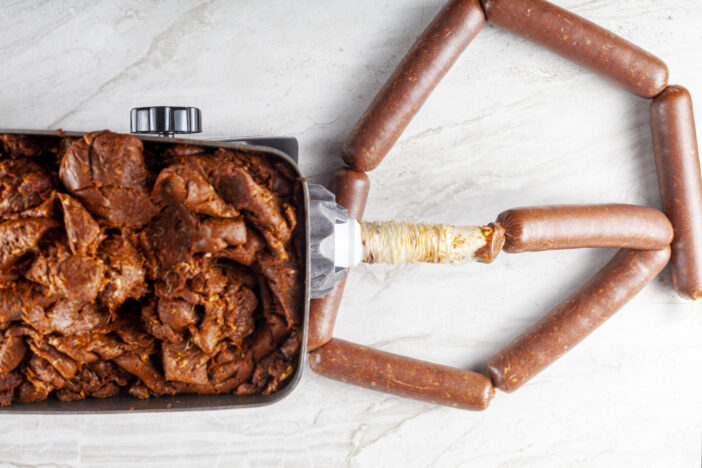
Choosing the right sausage stuffer is crucial for your homemade sausage success. Given the range of options available, understanding the types that match your needs will make all the difference. Let’s delve into the main categories.
Manual Sausage Stuffers
Simple yet effective, manual sausage stuffers are your go-to if you’re starting or prefer a hands-on approach. They typically feature a lever or a hand crank that you use to push the meat through the stuffer and into the casing. Ideal for beginners, these machines let you control the pace, making it less likely to overfill or burst the casings. They’re also budget-friendly, offering a lower entry price than their electric counterparts. However, remember, they require more physical effort, especially when tackling larger batches.
Electric Sausage Stuffers
For those who value efficiency and convenience, electric sausage stuffers are a godsend. These machines come with a motor, automating the stuffing process and significantly reducing manual labor. This is fantastic for large batches or frequent sausage making, as it speeds up the process and eases fatigue. Most electric stuffers feature adjustable speeds and come with foot pedals, allowing for hands-free operation. Though pricier, their speed and ease of use make them well worth the investment for serious enthusiasts.
Horn, Horizontal, and Vertical Sausage Stuffers
Diving deeper, sausage stuffers can also be categorized by their design: horn, horizontal, and vertical.
- Horn Sausage Stuffers, often manual, are characterized by their cast iron build and are perfect for small-scale operations. They’re durable and have a classic design, but their capacity is limited to 3-5 pounds per batch.
- Horizontal Sausage Stuffers are versatile and available in both manual and electric models. They have a larger cylinder, capable of holding 5-20 pounds of meat, making them suitable for mid to large-size batches. These stuffers work well for those who need more capacity than a horn stuffer but might not have the space for a vertical model.
- Vertical Sausage Stuffers are the most popular choice among home cooks and professionals alike. They can be manual or electric and are designed to push meat downwards into casings with ease. Their vertical orientation makes them space-efficient and capable of handling larger capacities, from 5 to more than 30 pounds, depending on the model.
Each type of sausage stuffer has its unique benefits, tailored to the preferences, quantity, and working style of the user. Whether you’re a novice looking to dip your toes into sausage making or a seasoned cook aiming to streamline your process, there’s a stuffer out there that’s perfect for you.
Factors to Consider When Buying a Sausage Stuffer
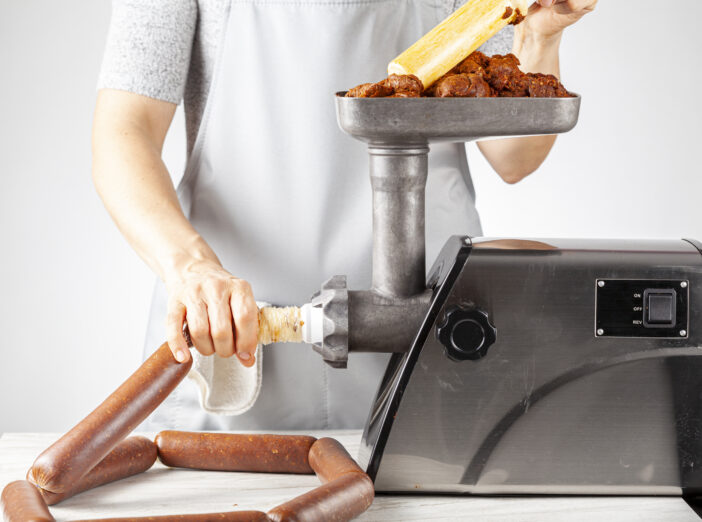
When you’re diving into the world of homemade sausages, picking the right stuffer isn’t just another step—it’s a leap toward culinary greatness. Let’s break down a few critical factors to keep in mind.
Capacity and Size
Think about how much sausage you plan to make in one go. If you’re looking to whip up a few batches for a family BBQ, a manual stuffer with a capacity of 5 pounds should suffice. These compact models won’t hog your counter space, making them ideal for small kitchens. On the flip side, if you’re dreaming of bountiful batches, an electric stuffer with a 10, 20, or even 30 lb capacity will be your best bet. Remember, the larger the stuffer, the fewer refills required, streamlining your sausage-making process.
Ease of Use and Maintenance
You want a stuffer that won’t turn sausage-making into a complex puzzle. For beginners, a model that’s straightforward to use and clean will make the learning curve less steep. Look for sausage stuffers with removable cylinders for hassle-free refilling and cleaning. Features like air release valves can also enhance your sausage-making experience by ensuring the casings fill evenly and smoothly. And let’s not overlook the importance of intuitive design—stuffing sausage used to be a two-person job, but the right machine can let you handle it solo.
Material Quality and Durability
Your sausage stuffer should be durable and reliable for countless meals. Look for stainless steel construction for longevity, heavy-duty frames to resist bending, and high-quality stuffing tubes and cylinders for food safety. Invest in a stuffer built to last to avoid future surprises.
With these factors in mind, you’ll be well-equipped to select a sausage stuffer that fits your culinary needs and helps you master the art of sausage making.
Essential Features of Sausage Stuffers
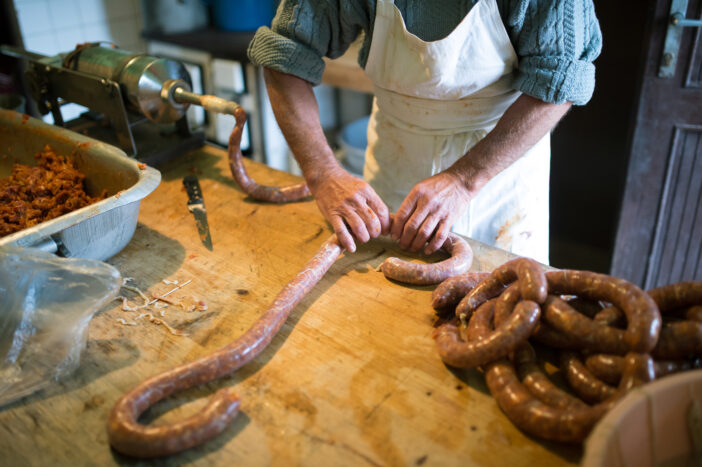
When diving into the world of homemade sausages, knowing the key features of sausage stuffers can make all the difference. Let’s break down what makes a stuffer a must-have tool in your kitchen arsenal.
- Air Release Valves: Essential for sausage makers, these valves prevent air pockets during stuffing, ensuring a smooth, consistent fill for perfect sausages every time.
- Nozzles and Funnels: Essential attachments for sausage stuffers, they enable the creation of sausages in various sizes and shapes. Ranging from 12mm to 38mm, these attachments, often made from stainless steel, offer durability and hygiene. With a diverse set of nozzles, you can experiment and customize your sausages to suit your preferences
- Automatic vs Manual Operation: Your preference between automatic and manual operation in a sausage stuffer reflects your working style. Manual models offer control over stuffing speed with a crank handle, perfect for small batches and a hands-on approach. Automatic or electric options save time and effort with motor-driven operation, suited for larger batches. Choose based on your kitchen workflow and comfort level.
Choosing the Right Sausage Stuffer for Your Kitchen

Picking the perfect sausage stuffer for your kitchen can make all the difference in your homemade sausage-making journey. Let’s dive into what you need to consider to find your best match.
Kitchen Space and Stuffer Size
Choose a sausage stuffer that fits your kitchen. Vertical models save horizontal space and come in various heights and capacities. Horizontal ones are easier to load for larger batches but require more counter space. Measure your kitchen to make the right choice.
Frequency of Use
Consider how often you’ll make sausages. For occasional use, a manual stuffer is cost-effective and suitable for beginners. If you plan to make sausages regularly, invest in an electric stuffer for quicker, more efficient stuffing, especially for larger batches. Electric models offer speed settings for better control, ideal for dedicated enthusiasts.
Ultimately, the best sausage stuffer for your kitchen depends on how much room you have and how often you plan to use it. Take a moment to consider your kitchen’s layout and your culinary ambitions, and you’ll be sure to find the perfect fit.
Cleaning and Maintenance Tips
Keeping your sausage stuffer in top condition means you’ll always be ready for sausage-making. Let’s dive into how you can keep it clean and well-maintained.
- Disassemble After Use: Always start by disassembling your sausage stuffer after each use. This includes removing the stuffing tubes, cylinder, and any moving parts.
- Soaking is Key: Soak all the non-electrical parts in warm, soapy water. This step helps in loosening meat residues, making them easier to remove.
- Scrub and Rinse: Use a soft brush or sponge to scrub the parts gently. Ensure you reach every nook and cranny where meat particles could hide. Rinse thoroughly with warm water afterward.
- Sanitize for Safety: Mix a solution of water and a food-safe sanitizer to sanitize the parts. It’s a step many overlook, but it’s crucial for avoiding cross-contamination.
- Dry Completely: Before reassembling, ensure all parts are completely dry. This prevents any risk of rust or corrosion, especially on those stainless steel parts.
- Lubricate Moving Parts: Apply food-grade lubricant to gears and moving parts. It keeps everything running smoothly and extends the life of your equipment.
- Inspect Regularly: Before each use, give your sausage stuffer a quick inspection. Look for any signs of wear or damage, especially on the gasket and gears. Early detection can save you from bigger issues down the road.
- Replace Worn Parts: Don’t hesitate to replace parts that show significant wear. This can include stuffing tubes, gaskets, or even gears. It’s all about maintaining the efficiency and safety of your sausage stuffer.
- Store Properly: When not in use, store your sausage stuffer in a dry, cool place. If possible, cover it to protect against dust and other contaminants.
- Tighten Up: Periodically check and tighten any bolts or screws. This ensures your stuffer remains stable and safe during use.
Following these cleaning and maintenance tips not only ensures the longevity of your sausage stuffer but also guarantees that your sausage-making adventures remain safe, hygienic, and enjoyable. Remember, a well-maintained sausage stuffer is the secret ingredient to perfect homemade sausages.
Top Tips for Getting Started with Your New Sausage Stuffer
Congratulations on adding a sausage stuffer to your kitchen arsenal! Let’s dive into making your sausage-making journey as smooth and enjoyable as possible with some expert advice.
Beginner’s Guide to Stuffing Sausages
- Prep Your Equipment: Before you dive in, it’s essential to get to know your sausage stuffer. If it’s manual, understand how the crank feels; if it’s electric, get familiar with the speed settings. Lubricate the stuffer tube with a bit of vegetable oil to ensure the casing slides on easily and to prevent the meat from sticking.
- Choose the Right Casings: Casings come in natural or synthetic varieties. Natural casings, made from intestines, offer a traditional feel and taste, while synthetic casings are more uniform in size and easier for beginners to handle. Soak your casings in water to make them more pliable and easier to work with.
- Prepare Your Meat Mix: Make sure your meat is cold—almost partially frozen—for optimal grinding texture. Season your meat well, and don’t be afraid to add a bit of water or ice to keep it cold during the process. This also helps in pushing the meat more smoothly through the stuffer.
- Stuffing the Sausage: Open one end of the casing over the nozzle of your stuffer, tie off the other end, and start stuffing. It’s crucial to keep a steady pace. Not too fast, which might tear the casing, or too slow, which could overwork the meat. Remember, it’s a dance between you and your stuffer.
- Air is the Enemy: Trapped air can create unpleasant pockets in your sausages. Utilize the air release valve if your stuffer has one. Otherwise, prick small holes in the casing where you see air bubbles forming with a sterile pin.
- Casing Breakage: If your casings keep breaking, they might be too dry or overstuffed. Ensure your casings are adequately moist and don’t overfill. Adjust the speed on your stuffer if necessary to give you more control.
- Uneven Filling: Are your sausages looking a bit lumpy? This could be due to uneven speed or filling. Practicing a consistent cranking pace or setting your electric stuffer to a comfortable speed can help. Also, how you’re handling the casing plays a part; gentle, consistent pressure is key.
- Air Pockets: Despite your best efforts, if you still find air pockets, double-check that you’re pricking air bubbles effectively and that the meat is cold enough. Warm meat tends to create more air pockets.
Frequently Asked Questions
How big of a sausage stuffer do I need?
If you’re frequently entertaining or want to make large batches, a 2.5 Kg sausage stuffer is ideal. It enables making small batches efficiently and can produce around 30 sausages at once, enough for eight people or for freezing.
How to stuff sausages at home?
Apply vegetable shortening to the sausage stuffer tube. Gently fit a casing over the tube, leaving about four inches to tie off at the end. Use the food pusher to feed meat into the casing, stopping when 4-6 inches of casing remains.
What cut of meat to grind for sausage?
For sausage making, pork butt or shoulder is recommended due to its 20-30% fat content, which is optimal for sausages. For added tenderness and juiciness, an extra 5% fat can be included. Request ‘boneless shoulder/butt’ if purchasing from a butcher.
What is the most important ingredient in sausage?
The most crucial ingredient in sausage is muscle meats from slaughtered animals. These meats vary in fat, water, and protein content as well as in water binding, emulsifying properties, and color, affecting the sausage’s final quality.
Is it cheaper to make your own sausage?
Yes, making sausages at home can be more cost-effective compared to purchasing them from the store. While store-bought sausages offer convenience, they can be expensive, and home sausage-making allows for savings.






